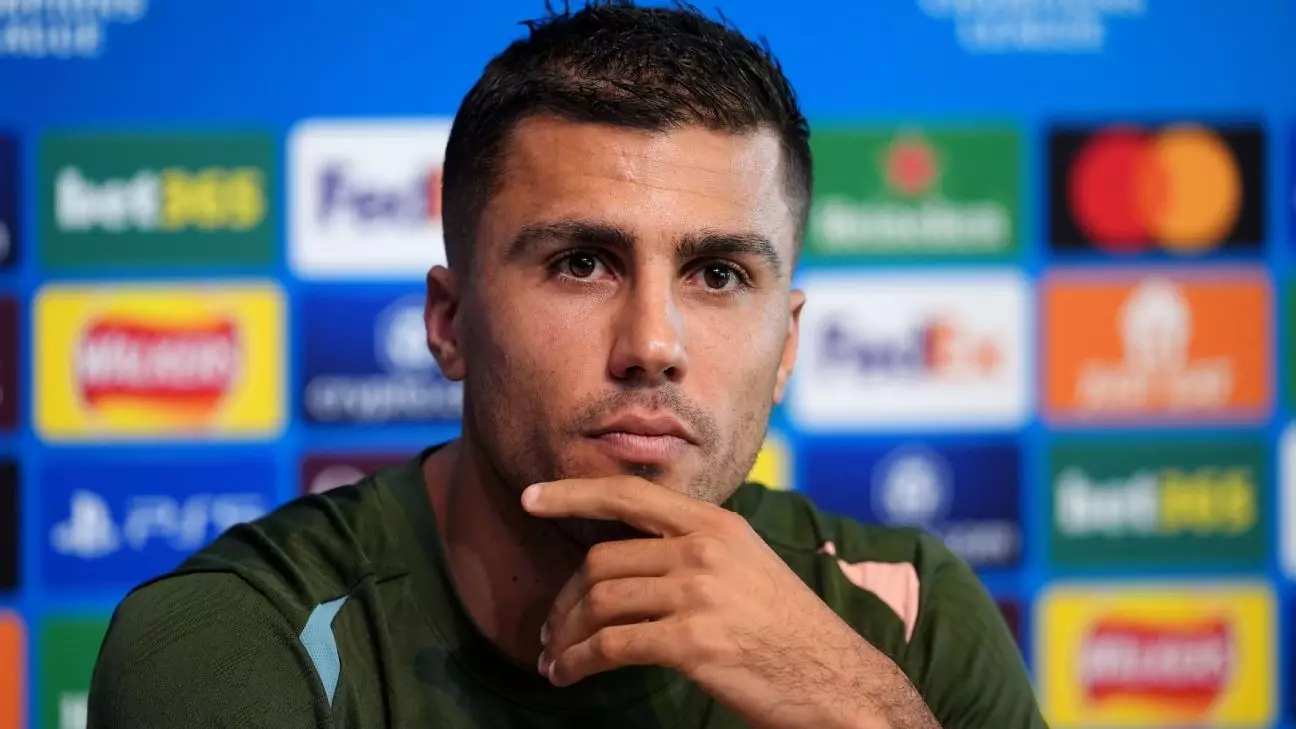In recent statements, Manchester City midfielder Rodri has raised significant alarm bells regarding the overwhelming workload faced by professional footballers. With rising match schedules that extend into the dizzying realm of around 85 fixtures yearly, many athletes are increasingly voicing their concerns about player welfare and the sustainability of such rigorous demands. Rodri, having played 63 games for club and country last season, underscores a growing sentiment among players that they are approaching a tipping point where striking may become a consideration.
This isn’t just a personal grievance voiced by Rodri; he insists this is a collective concern among players. The stress of modern football isn’t limited to the pitch—it’s the perpetual strain of long seasons, international commitments, and an expanded tournament calendar that have players questioning their limits. The prospect of labor unrest in professional sports, particularly in football, represents a significant moment of reckoning, as players increasingly recognize their right to stand against exploitative practices.
Examining the evolution of football, player workloads have dramatically transformed. Decades ago, teams played significantly fewer games, allowing athletes time to rest and recuperate. Nowadays, the rapid commercialization of the sport has resulted in a relentless expansion of fixtures due to lucrative television deals and sponsored tournaments. The shift has culminated in more congested schedules, often resulting in players being pushed beyond their physical limits.
Organizations that govern football must reckon with this. With the UEFA Champions League’s restructuring and the introduction of the Club World Cup, the likelihood of athletes encountering burnout has never been higher. Rodri’s assertion that a manageable game load should ideally be capped at 40-50 games reflects a significant departure from current realities, highlighting an urgent need for discussion around player capacity and the potential health risks linked with overexertion.
The potential ramifications of players reaching such an arduous breaking point cannot be understated. Not only do these grueling schedules increase the risk of injury, but they also threaten to diminish the quality of play, as fatigue inevitably affects performance levels. Rodri’s insights into the physical toll of consecutive seasons are particularly illuminating: if elite players struggle to sustain peak performance beyond the 50-game threshold, football as a whole suffers.
The reality is that professional football increasingly resembles a ‘business-first’ model rather than one that prioritizes athletes’ health and longevity. Players are beginning to advocate for change, not just for themselves, but for future generations of athletes. As the conversation shifts to potentially walking off the pitch, it is vital that decision-makers listen to these concerns and take proactive steps to address them.
Rodri’s remarks resonate deeply amidst mounting concerns over player welfare in football. As one of the most physically demanding sports, the need for balance between performance and player health is undeniably critical. If players’ voices unify around a call for reform, it might just be the catalyst that brings lasting change to the football landscape, ensuring that the spirit of the game endures. The responsibility now lies with clubs, leagues, and governing bodies to prioritize their players’ well-being over profit, thus fostering a healthier sports environment for all.

